Conifers Plants Not Trees Black and White Drawings
What is a Pine Tree?
Many of us have a tendency to refer to all conifers as pine trees, which is not illogical considering that the pine family (Pinaceae) is the largest family of conifers and accounts for approximately ¼ of all cone-bearing trees (the definition of a conifer is a plant that bears cones). However, those roughly 200 species in Pinaceae include not just pines, but firs, spruces, cedars, hemlocks and larches. Most Christmas trees sold in this country are firs or spruces, despite the fact that they are often referred to as pine trees. To truly be a pine tree, a conifer must belong to the genus Pinus.
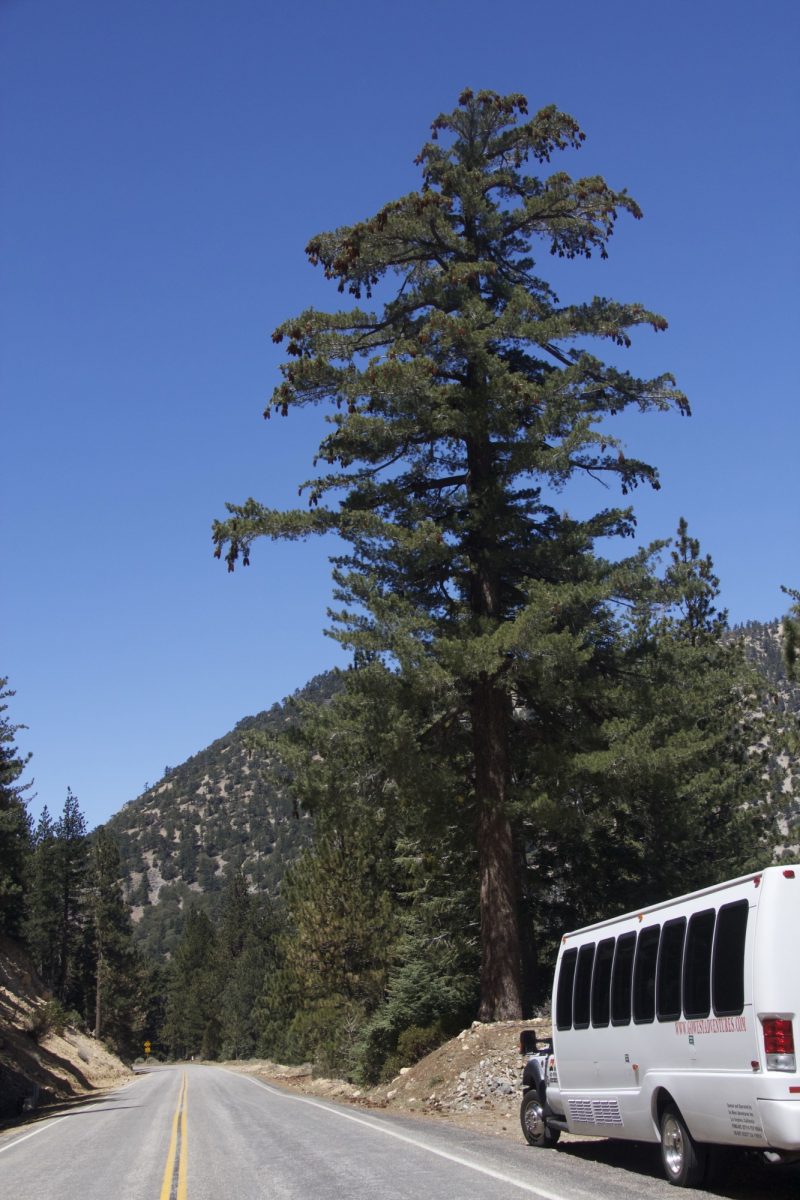
Wild-growing pines quickly become too large for all but the grandest gardens, as the photo of the sugar pine demonstrates, although amongst the approximately 100 recognized species in the genus Pinus there are many trees with attractive features. The key for gardening successfully with pines is to choose among the thousands of dwarf pine cultivars. A cultivar, short for 'cultivated variety', represents a selection that was chosen due to its slower growth rate, dwarf form, unusual color, weeping habit, etc. It's in the world of cultivars that you can find attractive, tough, interesting, structural choices to enhance your garden's year-round beauty.
10 of the best pines for gardens and one to avoid
1. Pinus densiflora 'Low Glow'
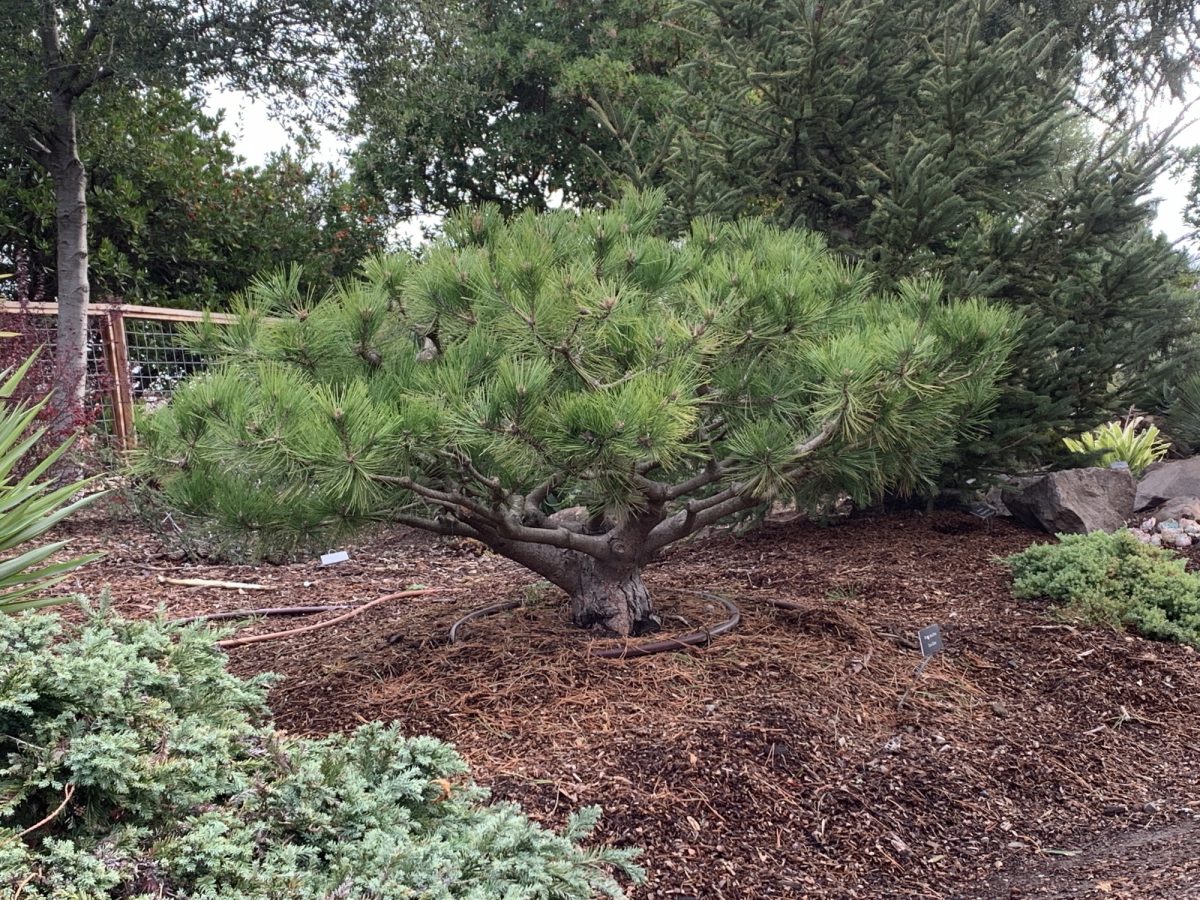
Low Glow Japanese red pine (USDA zone 5) has a spreading habit, lush green needles and when mature, reddish textured bark. It is slow-growing and well-behaved, requiring little pruning or special care. The specimen above is pruned regularly to open the crown and expose some of the trunk and branching, but it is not necessary, as the photo as the link demonstrates.
2. Pinus mugo (mountain pine or mugo pine) cultivars

The ACS recognizes almost 80 cultivars of this species, commonly called mugo (pronounced 'moo-go', not 'mew-go') pine or mountain pine (USDA zone 3). Mugo pines are probably the pines most often seen at mainstream nurseries and big box stores, and are often deemed unexciting by amateurs and aficionados alike. Mugos are some of the toughest conifers out there, native to the windy mountains of central Europe they are accustomed to eking out an existence in a tough environment. But there is also beauty and drama lurking in this widely variable and misunderstood species! Take the 'Jakobsen' mugo pine above: it naturally develops an open and interesting architecture, requiring no pruning to provide a structural garden focal point. Its deep green needles lend richness and depth to the landscape. It is a wonderful choice for a container, as well, and works beautifully in a rock garden.

There are quite a few golden mugo pines, in addition to 'Schweitzer Tourist', 'Carstens' is an excellent low-growing selection, as is 'Sunshine'. Others, such as 'Ambergold' or 'Winter Sun' grow to become quite vertical in habit.
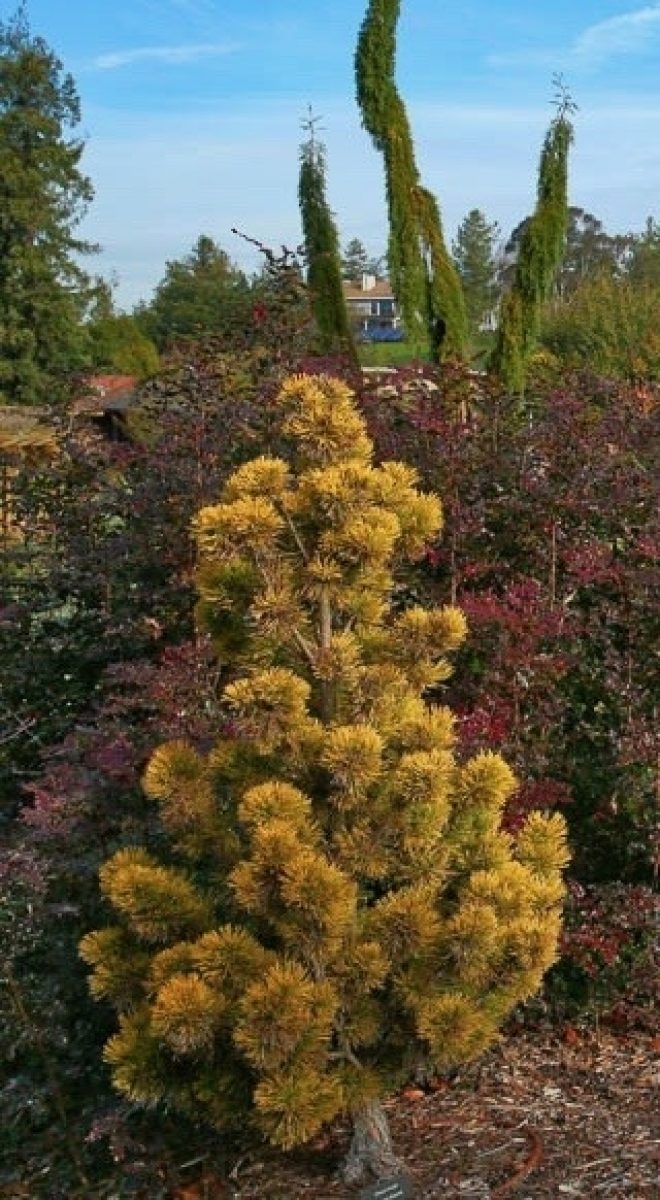
3. Pinus parviflora (Japanese white pine) cultivars

The Japanese white pines (USDA zone 5) are well-formed, elegant plants, with soft, delicate needles that are often streaked with white, blue or gold. These cultivars also have some of the most stunning pollen cones in the conifer world. They are not as tough as the mugos but with good drainage and a bit of afternoon shade in hot areas, they perform well in garden settings. 'Fukuzumi', pictured above, has a naturally windswept habit and rich blue-green needles. This specimen has never been pruned.
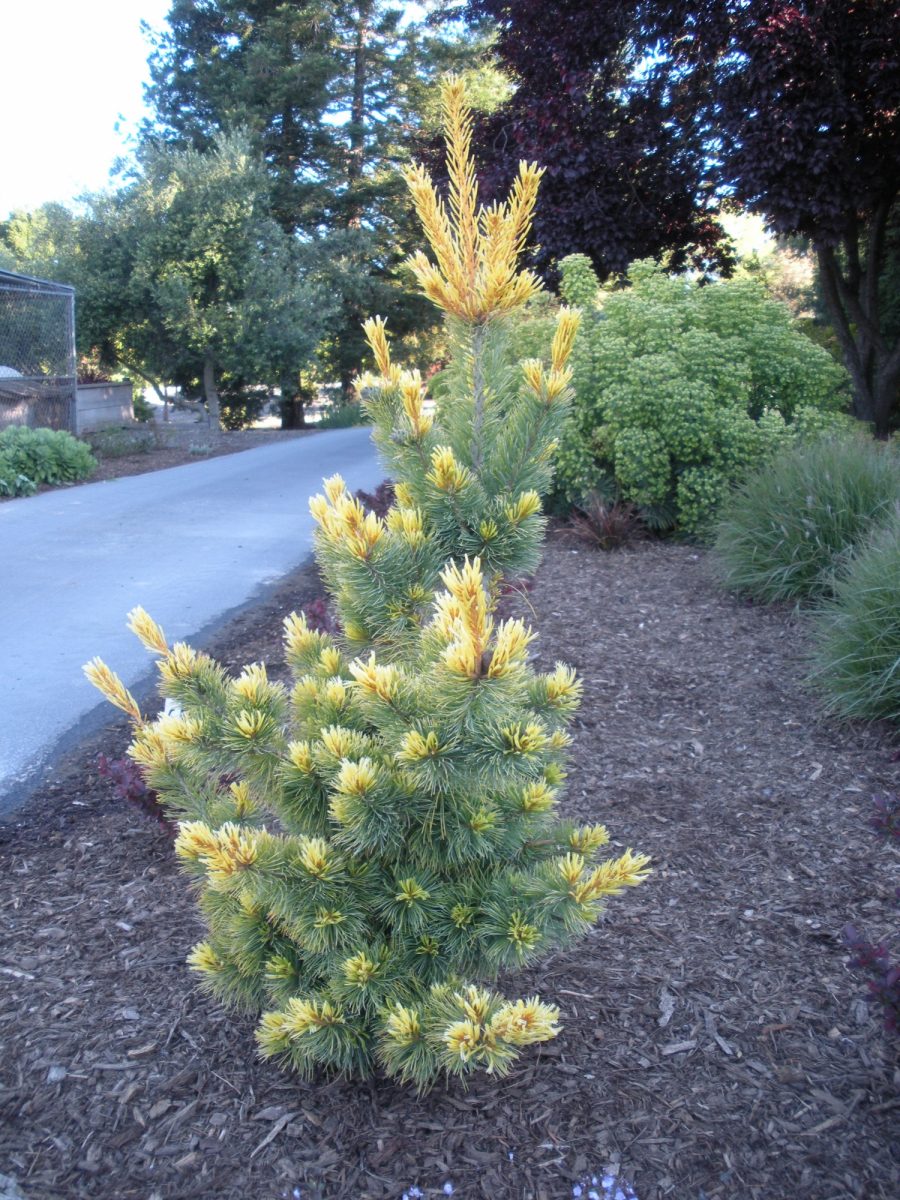
'Tenysu kazu', also known as 'Goldylocks', is a stunning selection, with creamy-golden new growth.
As if the soft, fluffy needles and elegant habit were not enough, Japanese white pines sport some of the most dramatic and eye-catching male (pollen) cones in coniferdom. Check out those on Pinus parviflora 'Cleary':
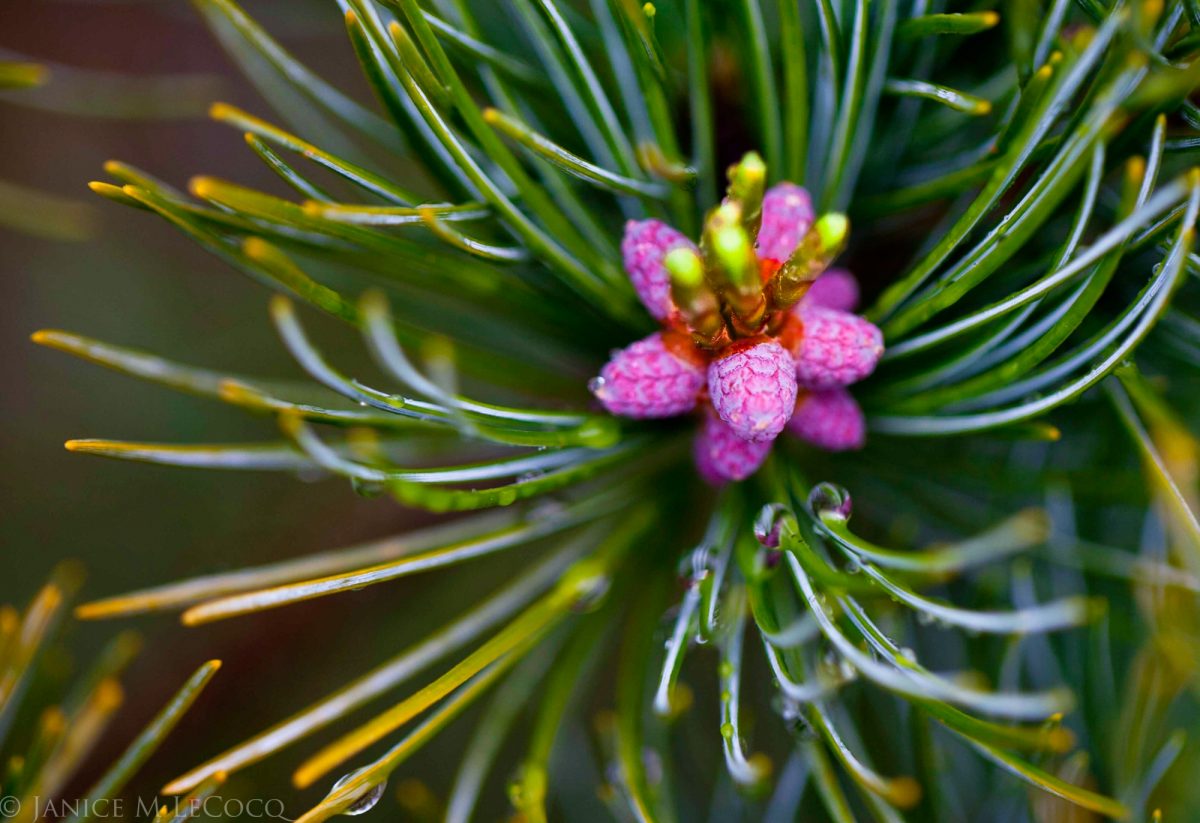
Or 'Bergman':

4. Pinus banksiana 'Uncle Fogy'
If the Pinus parviflora cultivars are some of the most elegant pines, 'Uncle Fogy' clearly has to be one of the most ridiculous. This cultivar of Pinus banksiana (USDA zone 2) is twisted, alternately weeping and upright and no two look the same.
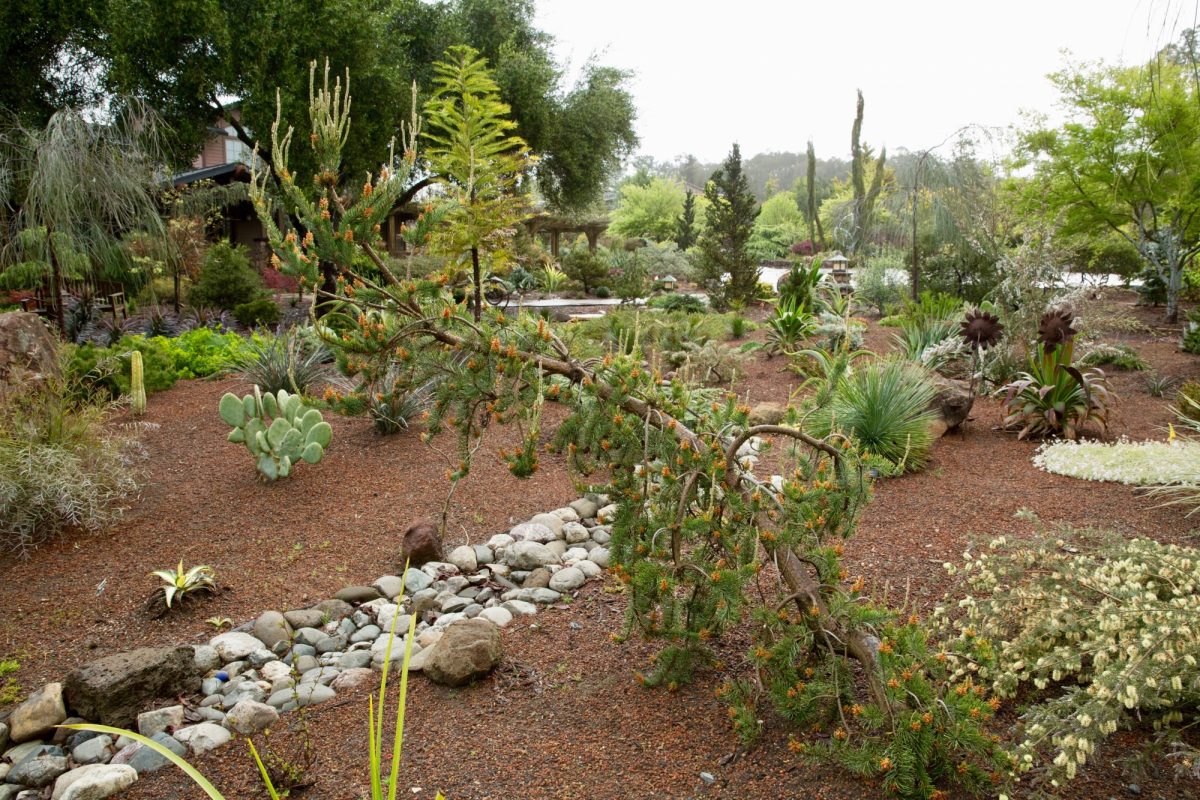
Pinus banksiana, or jack pines, grow more irregularly in nature than many other pine species. 'Uncle Fogy' just happens to be one of the most wildly irregular of all, growing sometimes upright for a while and then flopping to the ground and then often continuing upwards again. One of the best cultivars for pruning and shaping, you can make your 'Uncle Fogy' unique to your family! Jack pines are tough plants and once established require low water and little care. There are other attractive cultivars in this species, such as 'Manomet' and 'Angell'.
5. Pinus jeffreyi 'Joppi' (Joppi Jeffrey pine)
California has more native conifers than any other state, but many of them have no, or few, cultivars. Luckily for coneheads, one of the best-loved natives, Pinus jeffreyi, (USDA zone 8)has a lovely, compact cultivar called 'Joppi'.
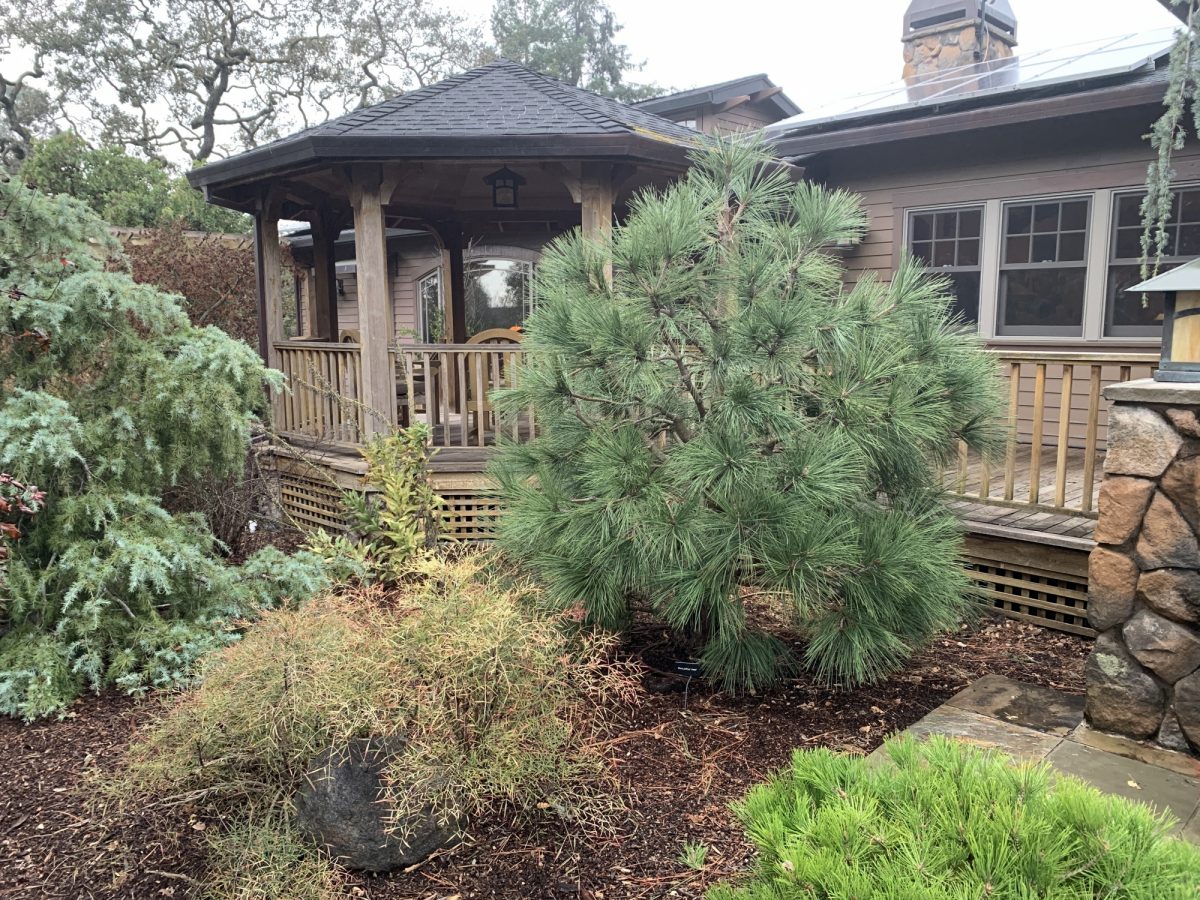
While the wild species can reach 80-120' at maturity, 'Joppi' is very well-behaved in a garden setting. The specimen above has been in the ground for six years, after being planted from a 20-gallon container, and is approximately five feet tall. The long, stiff needles are a wonderful contrast to lighter foliage and its strong structure adds an architectural element.
6. Pinus strobus cultivars
Like Pinus parviflora, Pinus strobus, or eastern white pine (USDA zone 3), is a soft, five-needled pine, and also has elegant attributes. Like Pinus mugo, there are many choices of cultivars, with a wide range of habit, color and shape. The ACS recognizes well over 100 P. strobus cultivars, making this species one of the most garden-friendly of all conifers. We'll recognize two cultivars here, wildly different in size, habit and color.

'Blue Shag', pictured above, is true to its name with its glowing blue-green needles and shaggy demeanor. If left alone, like this one, it is attractive if somewhat unruly. Those wishing a more sedate look can prune at will as the plant, which does not develop a central leader, tolerates pruning well.
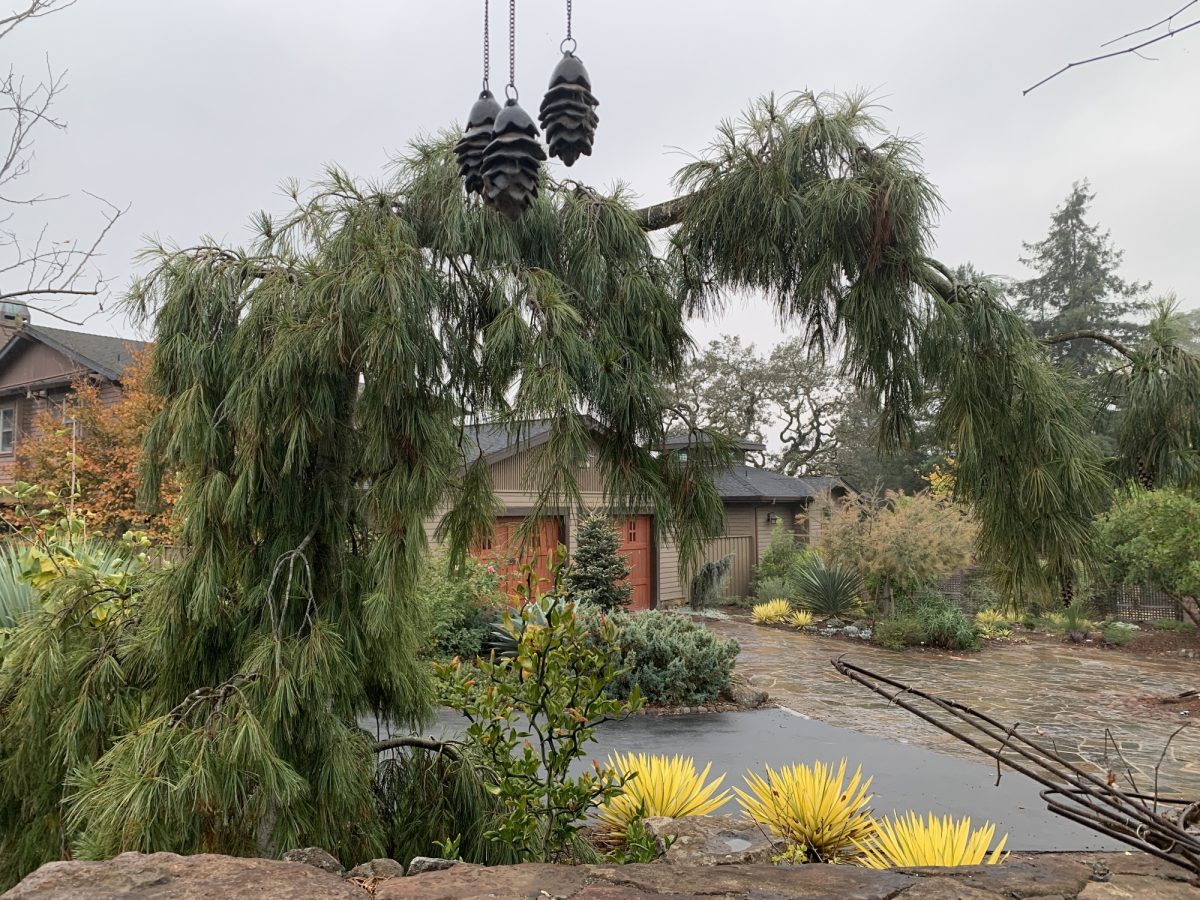
However, my favorite Pinus strobus cultivar is 'Pendula', which is sort of like a big, bad cousin to 'Uncle Fogy', albeit more graceful. This cultivar is not for small gardens and not for those wishing an orderly, regimented look. LIke 'Blue Shag', it takes well to pruning and can be tamed (or made wilder!) if so desired.
7. Pinus sylvestris (Scots pine) cultivars
If I had to pick my favorite species of pine it would have to be Scots pine, or Pinus sylvestris (USDA zone 3). I just love the flat, blue-green needles on the majority of the cultivars and their neat, compact habit.
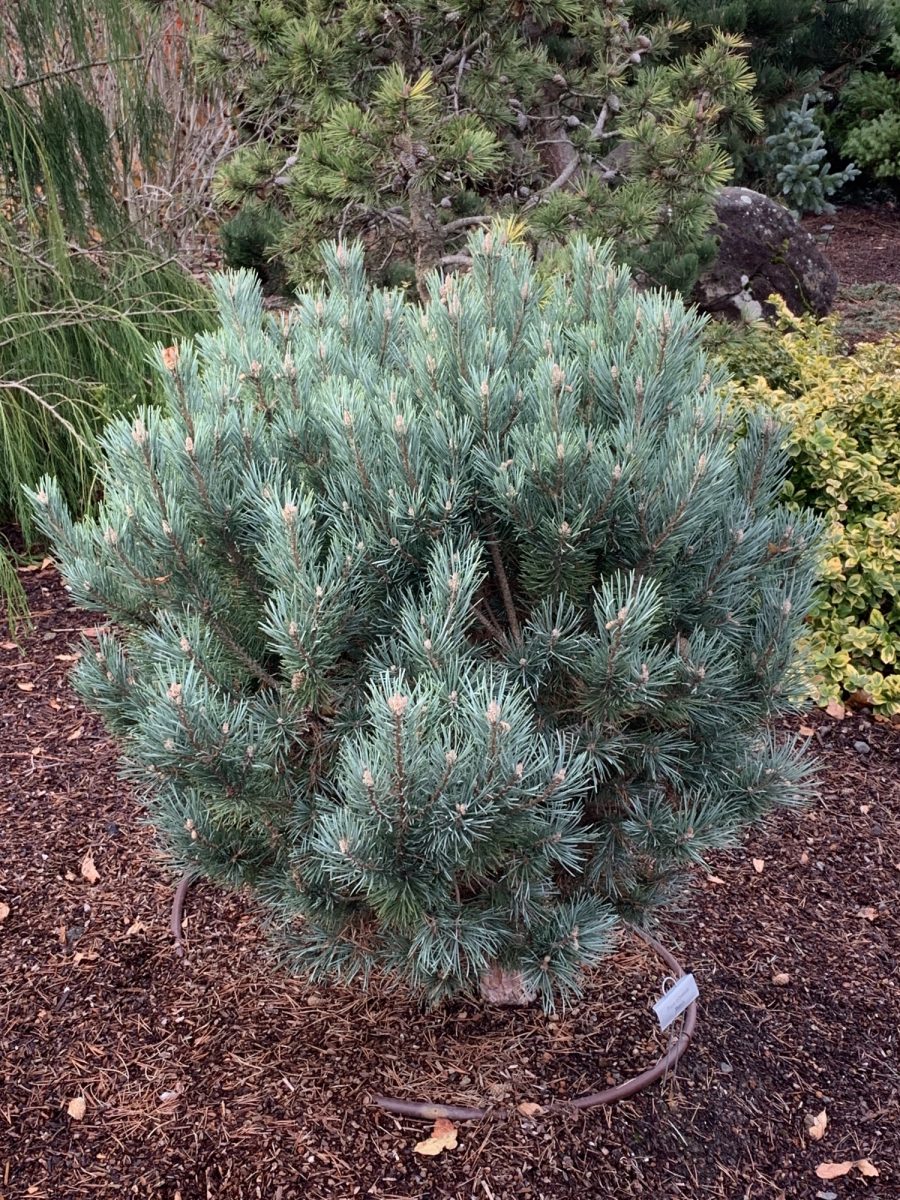
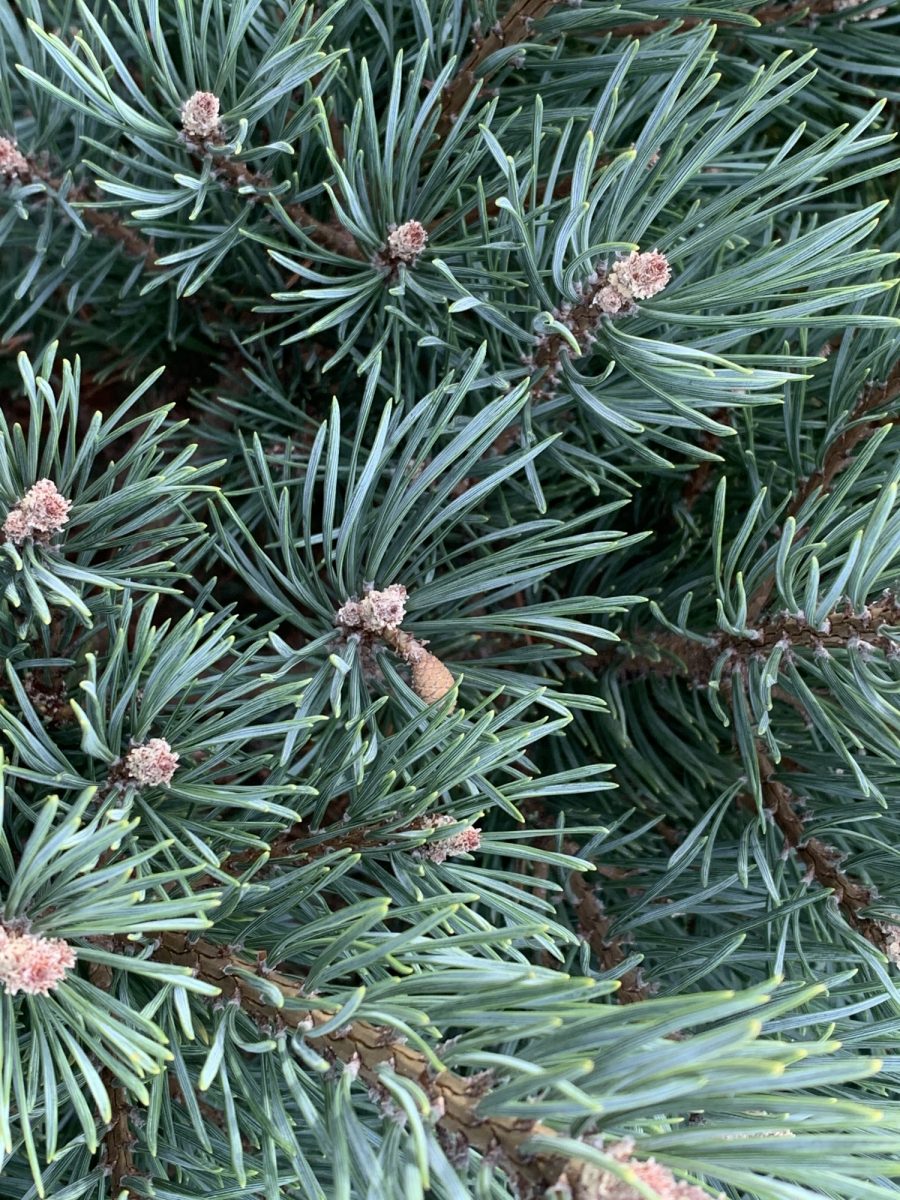
However, if you prefer golden foliage, Pinus sylvestris does that, beautifully, too! 'Nisbet's Gold' is one of the best gold conifer cultivars of any species, and, like many of the other sylvestris cultivars, has a tidy habit and is relatively slow-growing. With sufficient irrigation, this golden conifer does not burn in full sun, even in my zone 9b location.

There are dozens more Scots pine cultivars to choose from. Take a look and maybe like me, you'll fall in love!
8. Pinus nigra 'Oregon Green' (Oregon green Austrian pine)
Like mugos, Austrian pines (USDA zone 4) are one of the classsic old-world, 'hard' pines, so termed due to their relatively hard wood (although to keep things confusing, all conifers are known in the timber industry as 'softwoods'). They have very deep green, stiff needles and often a graceful natural form. When pruned they make marvelous focal points. My favorite is one of the larger cultivars, 'Oregon Green'.
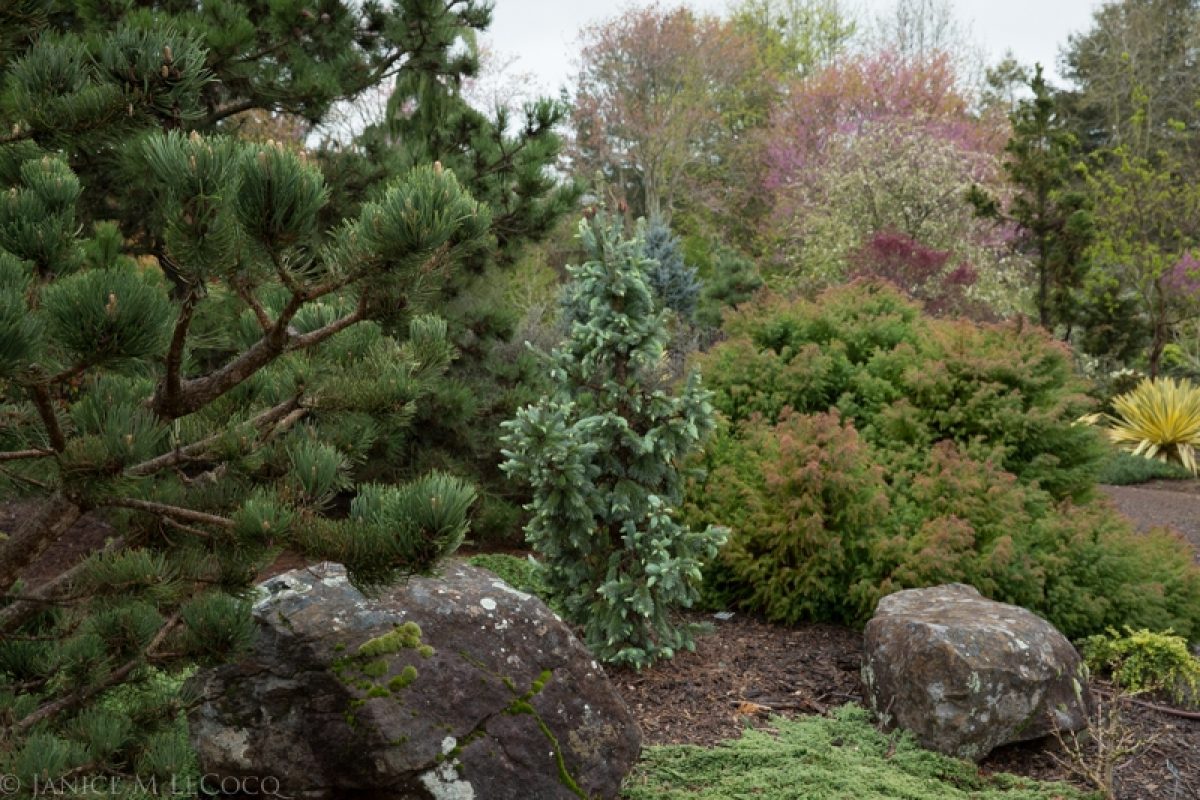
9. Pinus koraiensis (Korean pine) 'Dragon's Eye' or 'Oculus Draconis'
Korean pines are hardy (USDA zone 3), durable and very pretty. Most have curling needles, often with variegation. 'Dragon's Eye' is an upright cultivar, occupying a small footprint that makes it suitable for small gardens.
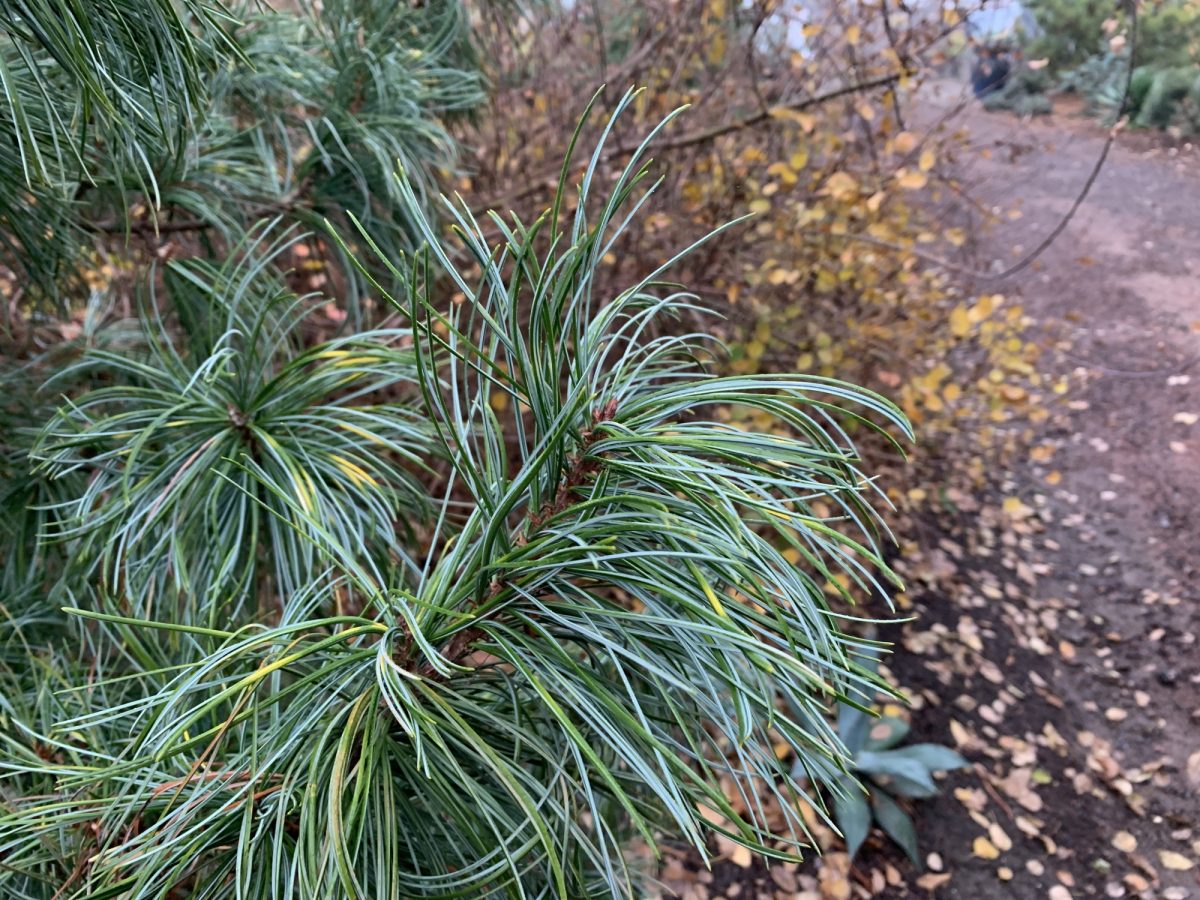
10. PInus wallichiana 'Zebrina'
Although last on the list, Zebrina Himalayan pine is one of the very best! All Himalayan pines have long, graceful needles, but Zebrina does it one better by striping them with pale yellow. The landscape effect is breathtaking, especially in winter's soft light.
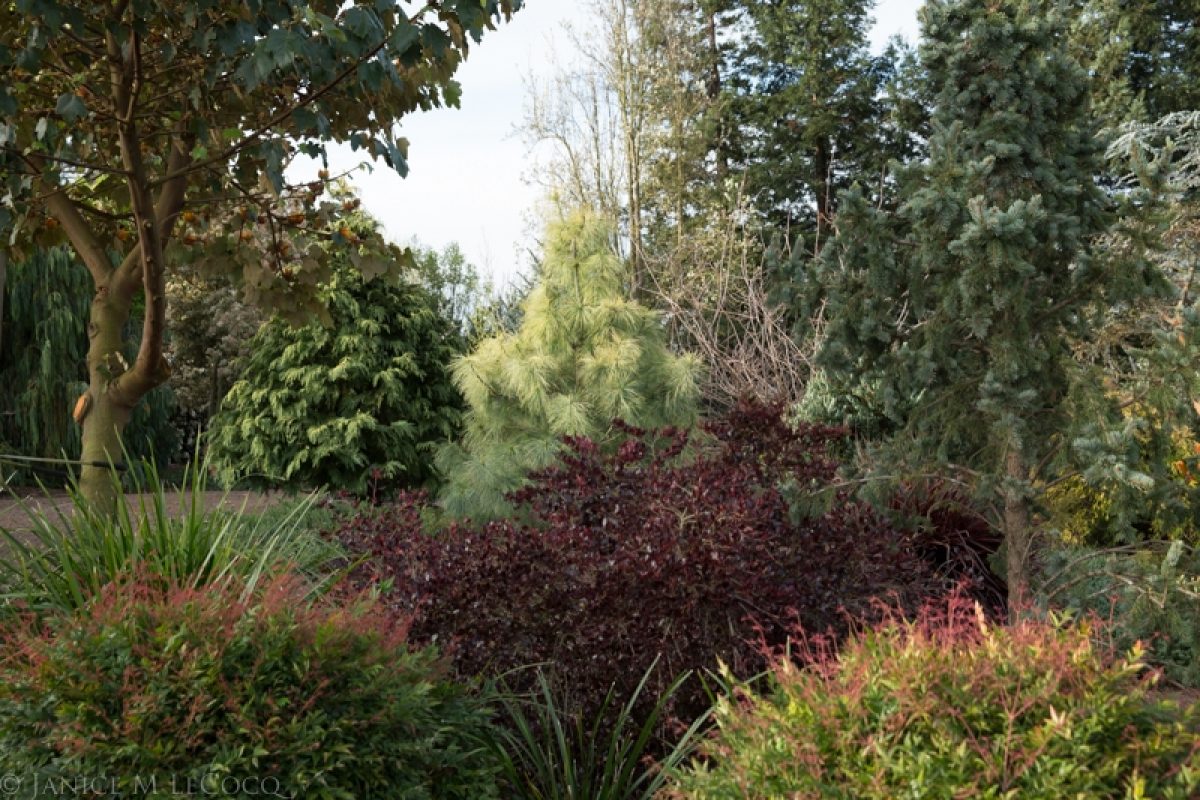
Those are, in my opinion, 10 of the very best pines for a garden landscape. But I promised at the start that I would give you one to avoid: Pinus thunbergii 'Thunderhead' (USDA zone 5). Why do I feel so strongly about its negative characteristics that I feel the need to note it here? Because 'Thunderhead' has just about the deepest, richest green needles of any conifer, and in spring it produces copious, white candles (new shoots) that contrast dramatically with the foliage. It's almost impossible to resist. So desirable is this cultivar that it is now turning up everywhere, even at nurseries that have very few conifers to offer.
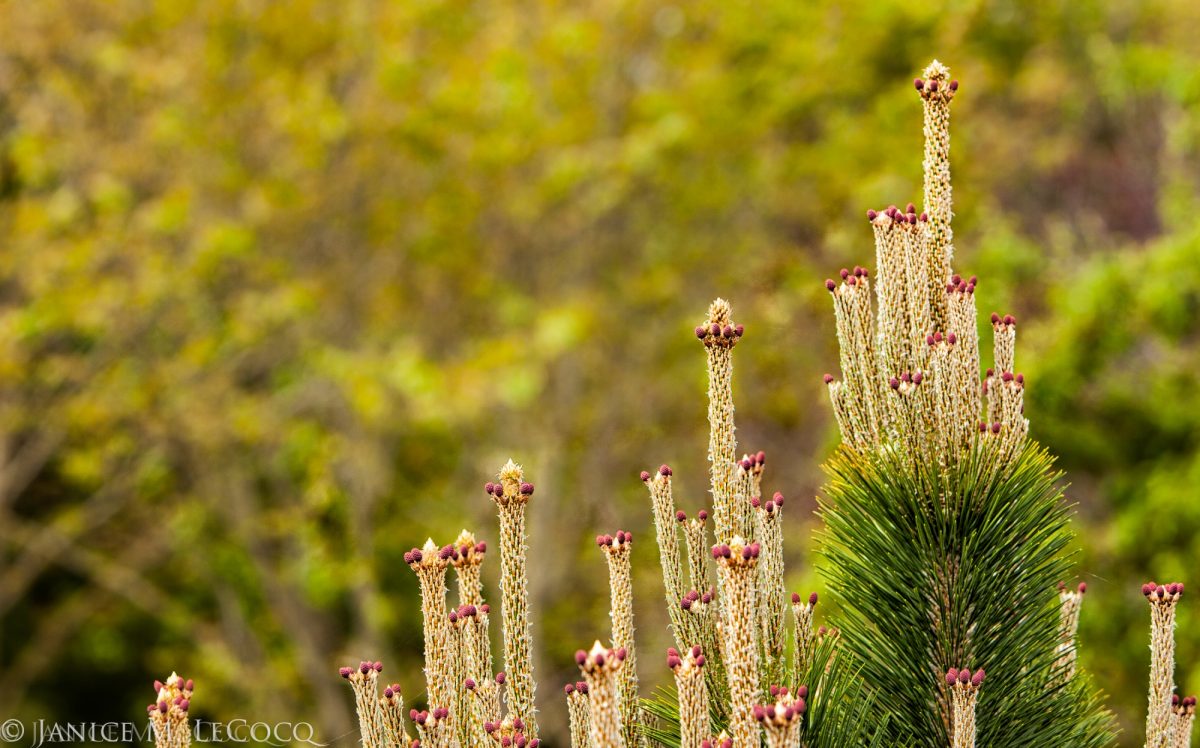
So if it is so lovely and dramatic, what's the problem? It's a thug! Most cultivars grow more slowly than the species. This one actually outpaces it! If you do nothing, this lovely little plant very rapidly becomes an enormous woolly bear. Of the original three that I planted, I am down to one and it gets pruned vigorously twice a year by an expert. If you are aware of Thunderhead's shortcomings, plant with impunity, but I have seen more disappointment (and disgust) associated with this cultivar than any other, partly due to the display that it receives in the retail trade.
Those are my favorite pines. What are yours! We'd love to hear!
Source: https://conifersociety.org/conifers/articles/10-types-of-pine-trees-that-everyone-should-know/
0 Response to "Conifers Plants Not Trees Black and White Drawings"
Post a Comment